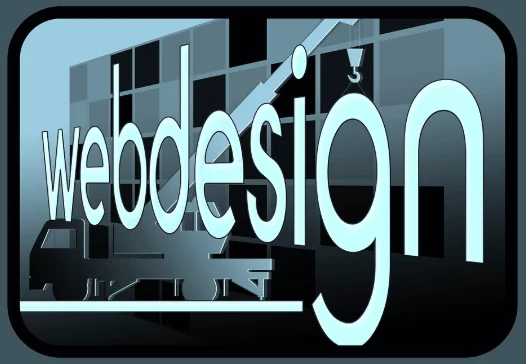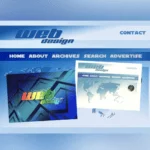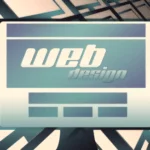Anyone who wants or currently owns a website desires one with a beautiful design. We are aesthetic creatures after all, and while we don’t wish to, we tend to always judge a book by its cover.
The same goes for websites. Automatically, we associate a website with good aesthetics with positive qualities: hard work, creative, eye-catching, unique, and so on.

But website design is so much more than being compliment-worthy. The right design, according to the Non-profit Hub, can make the company or individual behind it seem more professional, give a good first impression to website visitors, and give website visitors the user-friendliness they need to quickly receive the information they require from the website they’re navigating.
However, one downside to owning a website is heavy competition. With over 1.5 billion websites to date, it’s difficult to ensure your website truly stands out in the crowd. So, what’s left to do?
Apart from the right search engine optimization and the right marketing, one of the most important things you can do to improve your website is not only ensure it has a quality website design but that it specifically includes the following modern website design elements.
1] The right color scheme
No matter what anybody says, color does matter. Although it may not have mattered as a child when you had to decide between buying a blue yoyo or a green yoyo, when it comes to modern website design, the color scheme is more critical than one could imagine.
What makes a color scheme so important? Well, using a poor color scheme could turn off website visitors. Or, if colors are too dark or too bright, these could cause reading and navigation problems for your visitors or cause an unnecessary headache.
Don’t leave your website visitors with a bad taste in their mouths. Using a free, online color scheme generator, you can find a beautiful color scheme that works for you and your website. Color should be beautiful, convenient, corresponding to one another, and convey the correct mood of your website.
2] Legible fonts
When you’d complete homework assignments in school, what was the most important instruction that your teacher would give you? Besides quality and accuracy, the neatness of your handwriting or the legibility of the font you chose to type in was considered critical. Otherwise, how could your teacher read and correctly grade your work?
Legible fonts are just as critical in modern website design. This is especially true in a digital world where thousands of fonts now exist. We often want to get creative with our use of creative or cooky fonts, but if they are difficult to read, what gives?
When selecting fonts for your website, their ability to be easily read and how they generally appear on the page are both important. Likewise, it’s important that if you choose to have different fonts on your website that they complement one another well. Clashing fonts is a no-go in modern website design and is distasteful.
But how do you know which fonts to use? For main headers, links, and text boxes, always use clean, simple, basic fonts that won’t strain the eyes.
For less important features of your site, like the title of your website, slogan, tagline, or a quote listed on your website, feel free to use those special cursive fonts if you wish, that is, as long as they too can still be read with semi-ease.
3] Simplified navigation
They say, “The more, the merrier.” While that may be true in some cases, in terms of website navigation, it’s all about quality over quantity. Too many links or confusing navigation will leave your visitors frustrated and, ultimately, ready to leave your website as soon as possible. Of course, this isn’t what you intend, but it’s generally what happens.
If you want to keep website visitors from leaving after a short period of time and ensure they revisit your website in the future, aim for fewer links, clear-cut link title attributes, one navigation bar versus multiple, and an easy way to find the exact page and information that one is looking for on your website. Remember that less is more.
4] Galleries
No single website visitor is exactly alike. Some are mainly attracted by quality information written on a website while others primarily appreciate the visuals on a website. However, one thing is for sure: all visitors enjoy being both entertained and informed as much as possible. The right variation of information and entertainment is important.
Having a photo gallery or slideshow can be both entertaining and informative for a wide range of website visitors. When added in combination with other important website elements such as written information, videos, animations, graphics, and/or sound or music, your website will have the right variety it needs to be as appealing to as many visitors as possible.
5] Whitespace
You might be surprised to learn that in modern web design, whitespace is just as important as the elements on your website. Whitespace is exactly what it sounds like: space that is white or blank.
The more elements your website contains, the more there’s a need for whitespace to help break up different elements and eliminate the potential for clutter.
Whitespace is also vital as it keeps your visitors focused on certain key elements of a page. Not to mention, whitespace can additionally reduce confusion and anxiety website visitors might otherwise feel if there was too much going on, on your website. Basically, whitespace balances out your website.
Apart from holding the latter importance, whitespace on a page generally screams “modern.” Modern anything is typically very clean-cut, is well-organized, is properly counterbalanced with a lot of neutrals, and is free from chaos. Including plenty of whitespace on your website will give it that modern touch that you may have been lacking before.
6] Loading animation
While it’s considered a “bonus” feature on a website, loading animation plays a critical role. One of the most important aspects of loading animation (an animation that plays as a page is being loaded) is that it can help decrease your bounce rate. Website visitors today are quick to leave if a page takes too long to load, but loading animation helps distract them in a positive way.

Besides acting as a distractor and ultimately helping website visitors become more patient as page loads, loading animation can be used to generally improve the experience of navigating your website in a fancy manner, showing off your professional tech skills to your visitors. This is especially beneficial for animators and other digital artists wanting to showcase their work.
7] An “About Us” section or page
In this day and age, most people consider themselves sceptics. With how easily false information is spread on the Internet, it’s no wonder that when people visit a website, they try to look for a page, section, or anything that closely resembles a genuine, emotional, purposeful interaction as much as possible. Many people think, “What’s their intent?” when visiting a site.
Adding an “About Us” or “About Me” on your website is a great idea to get others to trust you or your company. Besides learning to trust you, sections or pages like these make new visitors feel more comfortable and better associated with your company, even if they had known nothing about you or your company prior.
Your about section or page should include information regarding why you created the website, what your goals are, and perhaps some background on you and/or your company.
This isn’t a time to simply brag and make yourself shine; it’s a way to connect with your visitors and/or potential customers by allowing them the opportunity to remember that you too are human.
8] Contact information
It doesn’t really matter what your website is or what its purpose entails; having a page or section on your website listing contact information is important regardless. This leaves visitors viewing you or your team as authoritative, trustworthy, and integral: all good qualities one would want to be perceived as in a professional setting.

If you cannot provide a specific address, phone number, or other information for privacy reasons, at the very least, include a form on your website allowing people to contact you by e-mail. While this isn’t viewed as positively as listed information, it still gives visitors peace of mind that they will be able to contact the website owner if and when they need to.
Conclusion
When it comes to operating a website, there’s no such thing as no competition. Not only do you want to compete with yourself to ensure your website is better than it has ever been, but you’re going to want to compete with other websites that are similar to yours.
While search engine optimization and various marketing tactics are usually the first things website owners amp up to ensure their website is a notch higher than their competitors’, your website design matters too.
If your website has a high bounce rate or simply could use some modern aesthetics, including the latter eight elements can make your website more pleasing.
Join 25,000+ smart readers—don’t miss out!









